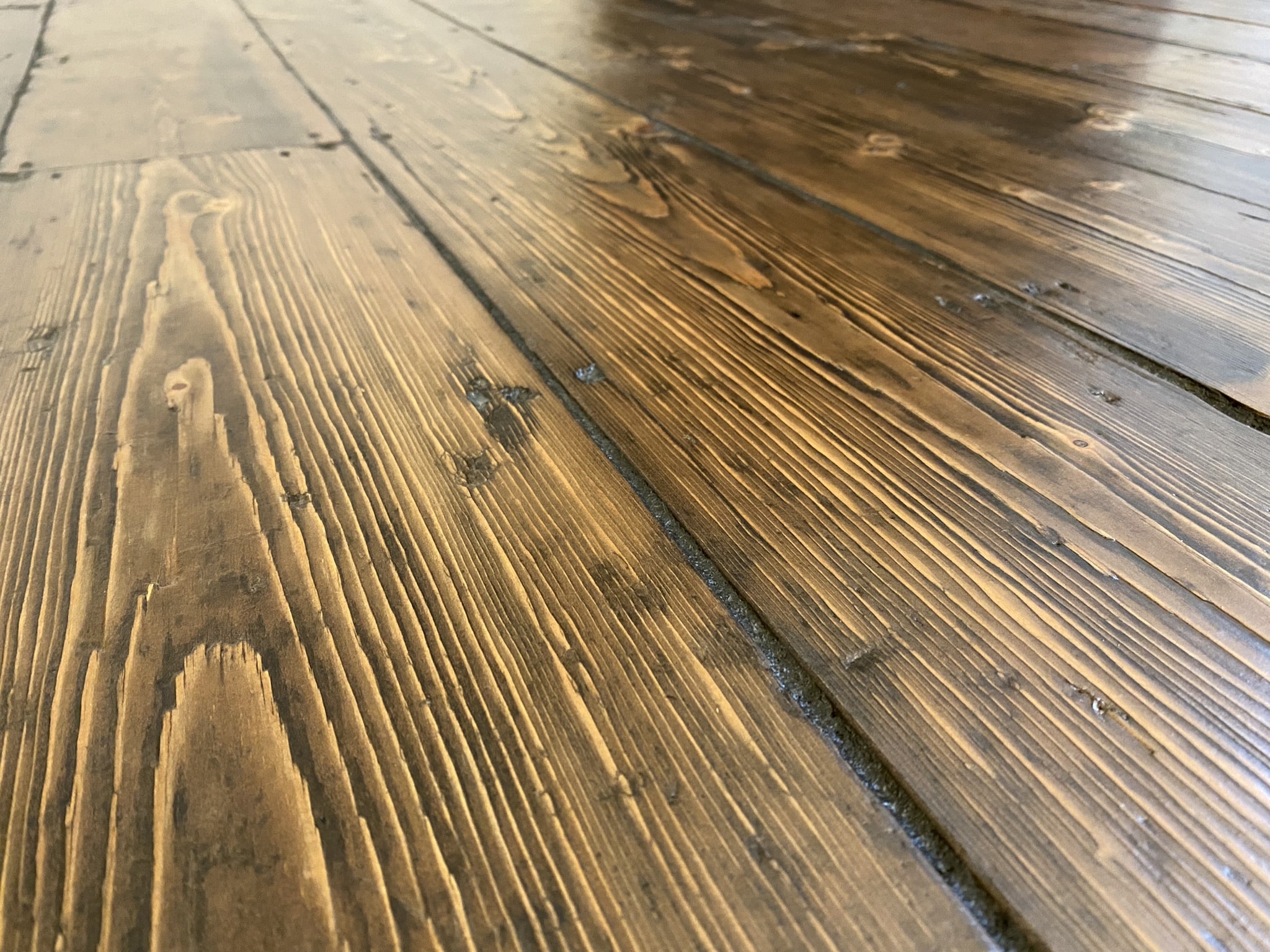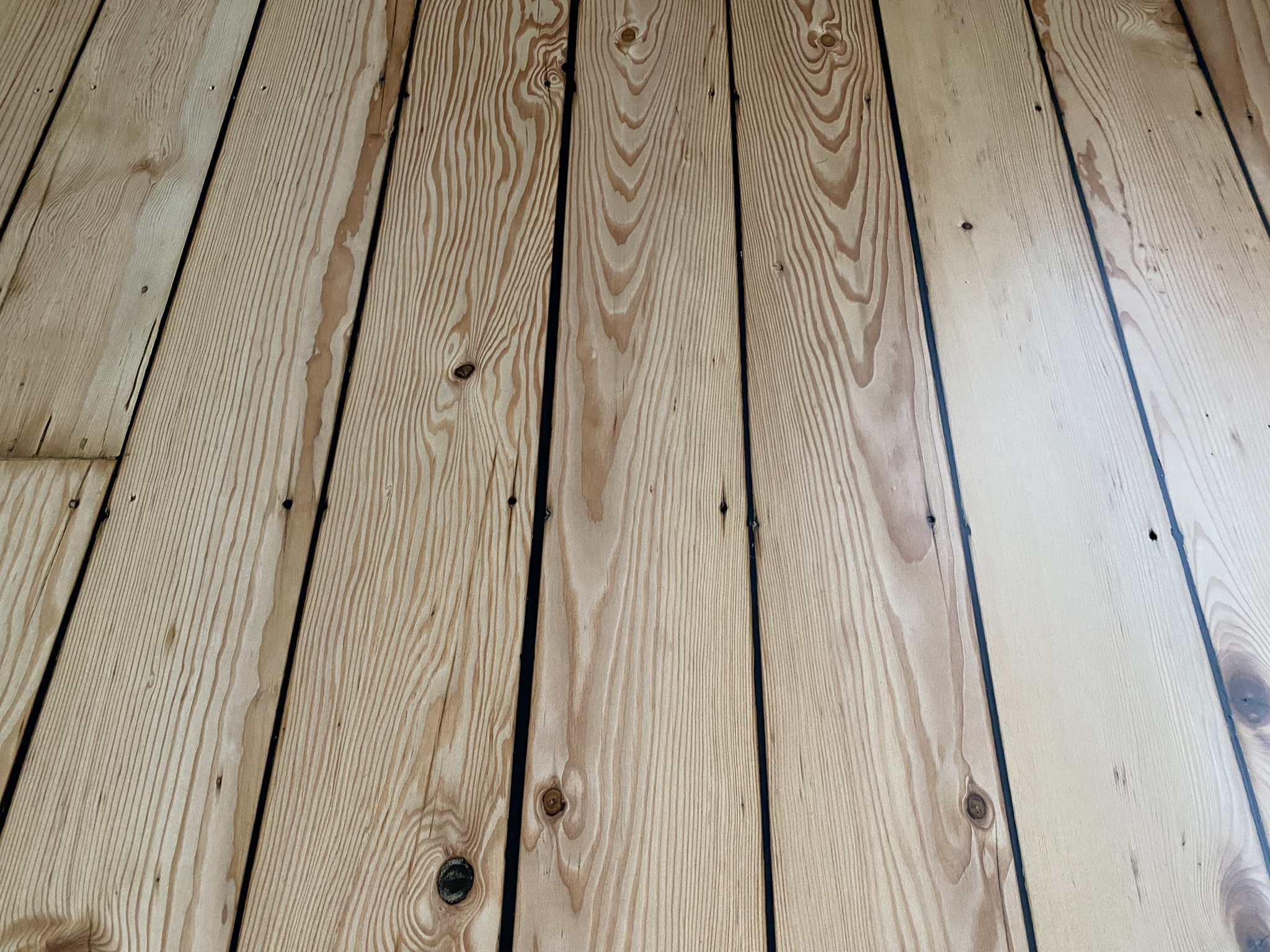WOOD FLOOR GAP FILLING
COMMERCIAL FLOORING
For commercial flooring projects, we deliver superior solutions designed to withstand high foot traffic and enhance the aesthetic appeal of your business space.
Read MoreFloor Restoration
Transform your floors with our expert restoration projects, revitalising them to their former glory while enhancing their natural beauty and ensuring long-lasting durability.
Read MoreInstallation
Embark on an unparalleled installation journey customised to your exact specifications, promising enduring quality and timeless aesthetic appeal for your space.
Read MoreStair Sanding
Enhance your staircase's appearance and durability with our meticulous sanding projects that provide expert restoration services for years to come.
Read MoreWhen Do You Need Wood Floor Gap Filling Services?
Wood tends to expand and contract due to temperature changes. Over the years, this leads to gaps in wood panelling and wood flooring. Gaps in the hardwood floor and engineered floor can be particularly nasty as they attract pests, resulting in a less healthy environment for the residents of the building.
For antique and expensive flooring where solid wood like pine, oak, and maple have been used, damage can be financially draining along with being a loss of heritage. Hence it is important to identify problems with your flooring as soon as they start.
Old hardwood floors and engineered floors can have gaps along the lengths of the boards and at the end. New flooring usually does not have gaps along the ends but only along the lengths of boards. If you see gaps appearing, it’s time to call a professional wood flooring company. Floorox is a company in the UK with a team who can help you with all your wooden flooring requirements.

The Steps Involved
At FloorOX, we understand the importance of maintaining the beauty and integrity of your wood floors. Wood floor gap filling is an essential part of floor maintenance and can greatly enhance the overall appearance and functionality of your flooring. Here are the steps involved in our professional wood floor gap filling process:
Inspection And Assessment
Our team of flooring experts will begin by thoroughly inspecting your wood floors. This step allows us to assess the extent of the gaps, identify any underlying issues, and determine the most suitable approach for gap filling. We will also consider the type of wood and finish to ensure a seamless and durable result.
Quick Contact With Us
We value your inquiries and feedback. If you have any questions, require additional information, or need support, please feel free to reach out to us at any time.

Preparation And Selection Of Filling Material
Before proceeding with the gap filling, we will prepare the area to ensure a clean and smooth surface. This may involve removing any debris, dust, or loose particles from the gaps and the surrounding floor. Proper preparation is crucial to achieve optimal results and ensure the longevity of the gap filling solution.
We will carefully select the most appropriate filling material based on the size and nature of the gaps in your wood floor. Our experts are well-versed in different types of fillers. We take into consideration factors such as colour matching, flexibility, and compatibility with your existing floor finish.
Why Should You Choose A Professional Wood Flooring Company?
Sometimes gaps are the result of fluctuating temperature and insect attacks. In such cases, you may want to redo the floor by yourself although that is going to be a laborious process.
In most houses in the UK, air bricks are built into the wall towards the bottom of these walls, vertical to the floorboard. If the floorboards are not correctly attached to the floor, it might be possible to lift the floorboards, then slide them back and readjust them so that the gaps are closed. This may be a tiring process but the plus side of this is that you will not require gap-filling at all. However, if you have a solid wood flooring built with expensive wood, any major mistake you make will cost you more. So, it’s better to hire a professional wood flooring company like Floorox for high-quality gap-filling services.
Our Service Areas
Floorox provides services across the United Kingdom and operates in East London, Central London, North London, Essex, and Hertfordshire, among other regions. We work with all types of residential and commercial spaces like schools, gyms, offices, and restaurants. We offer high-quality work at a reasonable price.
Types Of Wood Floor Gap Filling
At FloorOX, we specialise in resin and dust fillings and reclaimed wood silvers.
Resin And Dust Fillings
This is particularly useful if your floor is being sanded, or your floor is not antique or made of original pine wood. A mixture of dust and resin is poured into the gaps to fill them in this method. The best way to fill sanded floor planks or parquets is to use fine dust generated during the sanding process. This dust can be mixed with resin to use as a filler in the wooden boards. The resultant mixture is thick and you can use a spatula to insert it into the gaps. The paste will require some time to dry after which the floor can be resanded. Following this procedure, the floor can be polished. This method does not cost a lot, but the paste can dry and disintegrate. On the plus side, this method results in the gaps blending into the floor with a perfectly matched colour, as the sawdust generated from the same floor. If you are looking for short-term benefits, this method is particularly useful for gaps less than 5 mm width on parquet floors.

Glue-Down Method
The short answer is – yes, in some cases. However, you need a more elaborate answer. As we explained in the steps above, they may appear simple, and you may feel that by doing it yourself, perhaps with a few hired extra hands, you can save on the seemingly large bill you are being presented with. But before plunging into a DIY venture, think it over carefully.
Get In TouchAdvantages Of Resin And Dust Fillings
Since the sawdust has been collected from your floors, the colour always matches. The finish is smooth, and it dries quickly. Hence this method is less time-consuming and hence preferable if you are looking for a short-term, time-saving floor repair process.
Disadvantages
The biggest disadvantage of this way of support is that this only works if there is a solid base to support your floor planks. Without the base, as in with original pine flooring, this method of filling often disintegrates quickly as extra pressure displaces the fillings. This is why this method is good for parquet flooring or lock joint floorboards, in which the filling will not collapse.
Using high-quality resin filler products can reduce the chances of the gap-filling falling through. This is why we use extremely high-quality resin filler products. Our wood floor gap filling service comes with several associated services including inspection of the flooring, refitting of the flooring. Only after completing these processes do we move towards restoration.
Reclaimed Wood Slivers
This is an excellent way to deal with gaps in Victorian pine wood floors. Reclaimed wood slivers consist of pre-cut strips of wood between 0-6 mm or 0-8 mm and are angled at each end of the wooden boards. If draughts come up from cellars in your home, this is an excellent solution for you to prevent any complications on your floor.
Sometimes it is also used to just make the floor look better as it gives a very aesthetic finish. This is useful for old buildings or for people who want to add flair to their floors.
The process consists of glueing slivers with PVA wood adhesive and then hammering them onto the gaps in the floors. The slivers are left to dry and then the excess wood is chiselled away. Following this, the sanding and the finishing processes take place. These gap-filling methods are always done before the sanding as the sanding makes the floor smooth and can blend in the slivers with the floor. Slivers are often made of strips of pinewood. This is particularly useful in the case of pinewood flooring and wider gaps.
Advantages: This method is more durable than the dust and resin method. Since the slivers rest on the joists too, this method guarantees that the slivers will not disintegrate, pop out or drop down below the floor. Filler strips create a very long-lasting and attractive result. These wood silvers are good for the boards, improve floor insulation and reduce drafts from the voids below the boards. This method too is to be done before the sanding as varnishing and polishing are not to be done after the sanding process.
Disadvantages: Although it creates a fine effect, one should not use too much of these. Pinewood slivers are not too aesthetic to the eyes when used en masse.
Fill in all your details in the form. Within 24 hours we’ll get back to you to arrange your free onsite visit.
During our visit we’ll measure your floor, discuss all your options and take time to answer your questions.
Within 2 business days of our onsite visit, you’ll have your detailed, multi-option quote sent to you.
